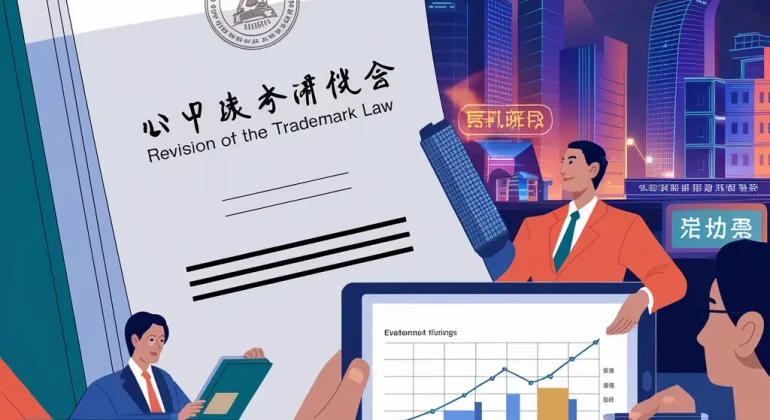In the realm of intellectual property law, China’s trademark regulations, as outlined in Article 49 of the Trademark Law of the People’s Republic of China, mandate that registered trademarks be subject to cancellation if not used within a continuous three-year period. This policy aims to prevent the hoarding of trademarks and ensure that only actively utilized marks remain protected. Recent developments indicate potential changes to this revocation procedure, signaling a significant shift in China’s trademark enforcement landscape.
Sommaire [masquer]
Current Framework of China’s Non-Use Trademark Revocation
Under the existing legal framework, a registered trademark in China may be vulnerable to cancellation if it has not been used for three consecutive years, in accordance with Article 49 of the Trademark Law. The revocation process is typically initiated through a formal request by a third party, often a competitor or interested entity, who petitions the China National Intellectual Property Administration (CNIPA) to cancel the inactive trademark. The trademark holder is then required to provide evidence of genuine use within the specified period to maintain their rights.
Proposed Amendments to the Revocation Procedure
Recent discussions within China’s legislative bodies suggest forthcoming amendments to the non-use revocation procedure. While specific details remain under deliberation, the proposed changes may include:
- Extension of the Non-Use Period: Consideration of lengthening the current three-year period to a longer duration, providing trademark owners with more flexibility before facing potential cancellation.
- Modification of Evidence Requirements: Reevaluation of the types and standards of evidence required to demonstrate genuine use, potentially streamlining the process for trademark holders.
- Introduction of Grace Periods: Implementation of grace periods or exceptions for certain industries or circumstances, acknowledging that some sectors may require longer lead times to commence trademark use.
Implications for Trademark Holders
These proposed changes carry significant implications for both domestic and international trademark holders operating in China:
- Strategic Planning: Trademark owners may need to reassess their portfolio strategies, considering the potential for extended non-use periods and adjusted evidence requirements.
- Compliance and Monitoring: Enhanced vigilance in monitoring trademark use and maintaining comprehensive records will be essential to comply with any new regulations.
- Legal Consultation: Engaging with legal experts specializing in Chinese trademark law will be crucial to navigate the evolving legal landscape and ensure continued protection of intellectual property rights.
Conclusion
As China moves towards amending its three-year non-use trademark revocation procedure, trademark holders must stay informed and proactive. Adapting to these changes will be vital in safeguarding intellectual property assets within China’s dynamic market.
Dreyfus Law Firm assists clients at all stages of trademark protection and management in China and internationally. Our services include trademark portfolio monitoring and management, preparation and submission of evidence of use, and defense in case of challenges. We also assist clients in administrative procedures before the CNIPA and provide tailored strategies to adapt to regulatory changes in the Chinese market. With our in-depth intellectual property expertise and our global network of specialized attorneys, we ensure comprehensive and customized support to secure and enhance your intangible assets.
Dreyfus Law Firm is partnered with a global network of attorneys specializing in Intellectual Property.
Join us on social media !
FAQ
1. What is the current non-use period for trademark revocation in China?
Currently, a registered trademark in China can be canceled if it has not been used for three consecutive years as stipulated in Article 49 of the Trademark Law.
2. What constitutes 'genuine use' of a trademark in China?
Genuine use refers to the actual commercial use of the trademark in connection with the goods or services for which it is registered.
3. How can a trademark holder prove genuine use?
Evidence such as sales invoices, advertising materials, and product packaging displaying the trademark can be submitted to demonstrate genuine use.

